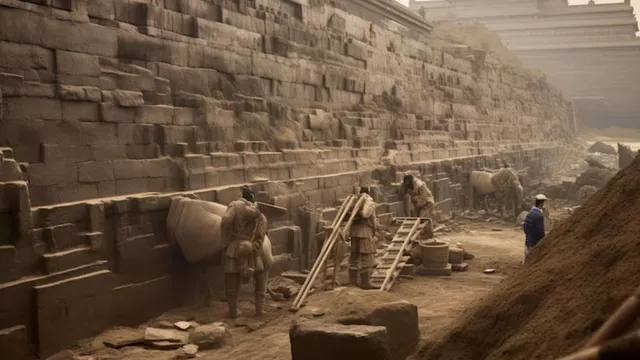- By Supratik Das
- Mon, 10 Nov 2025 09:10 PM (IST)
- Source:JND
A remarkable archaeological discovery in Pakistan’s Punjab province has unearthed a 16th-century inn built during the reign of Sher Shah Suri, offering a rare glimpse into the architectural and cultural overlap between the Harappan civilization and the Sur Empire.
According to officials from the Punjab Tourism, Archaeology and Museums Department, the ancient rest house, located near the Harappan ruins, about 220 km from Lahore was found during a recent excavation. The site sits on the southern side of the historical Sher Shah Suri Road, once a vital route connecting major trade and administrative centers across the subcontinent.
“This inn was constructed between 1540 and 1545 as a resting place for postal convoys and travelers,” said Punjab Tourism Secretary Dr. Ehsan Bhutta, adding that the find provides valuable evidence of the infrastructure built under the Afghan ruler’s administration.
Blend Of Harappan And Sur-Era Features
What makes this discovery extraordinary, archaeologists say, is the combination of Harappan-era bricks with architectural elements typical of the Sher Shah Suri period. Excavations revealed a northern gateway flanked by three rooms on each side, leading into a triangular courtyard measuring approximately 45 by 30 meters. Inside, researchers found multiple small chambers, likely used for travelers and officials resting along the route.
“The presence of a veranda, rest rooms, and a water pond are distinct features of Sher Shah Suri’s caravanserais,” Dr. Bhutta explained. “Yet, the materials—especially the bricks—trace back to the Harappan era, suggesting a reuse of ancient resources and a continuity of settlement.”
Artifacts Offer Glimpse Into Daily Life
The excavation team also uncovered a trove of artifacts, including terracotta figurines, fragments of bangles, gaming objects, toy cart wheels, and a notable faience seal or tablet. These items are expected to provide deeper insight into trade, craftsmanship, and social life during both historical periods. “Each recovered artifact will be catalogued, chemically analysed in laboratories, and later displayed in museums for research and educational purposes,” Bhutta said.
Sher Shah Suri, who briefly toppled Mughal Emperor Humayun in 1540, brought major administrative reforms and infrastructure projects to the region, such as the Grand Trunk Road. Such discoveries indicate that his legacy was not only relevant to his military achievements but left tangible marks on connectivity of trade routes.
ALSO READ: Pakistan: 1,200 Years Old Temple Found In Khyber Pakhtunkhwa's Barikot, Swat
Archaeologists believe that continued excavation in the area could reshape understanding of how ancient and medieval societies coexisted and evolved across the Indus region.
With inputs from agency.
